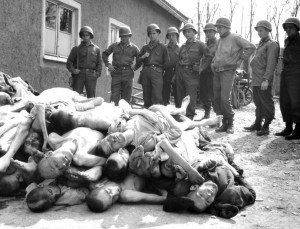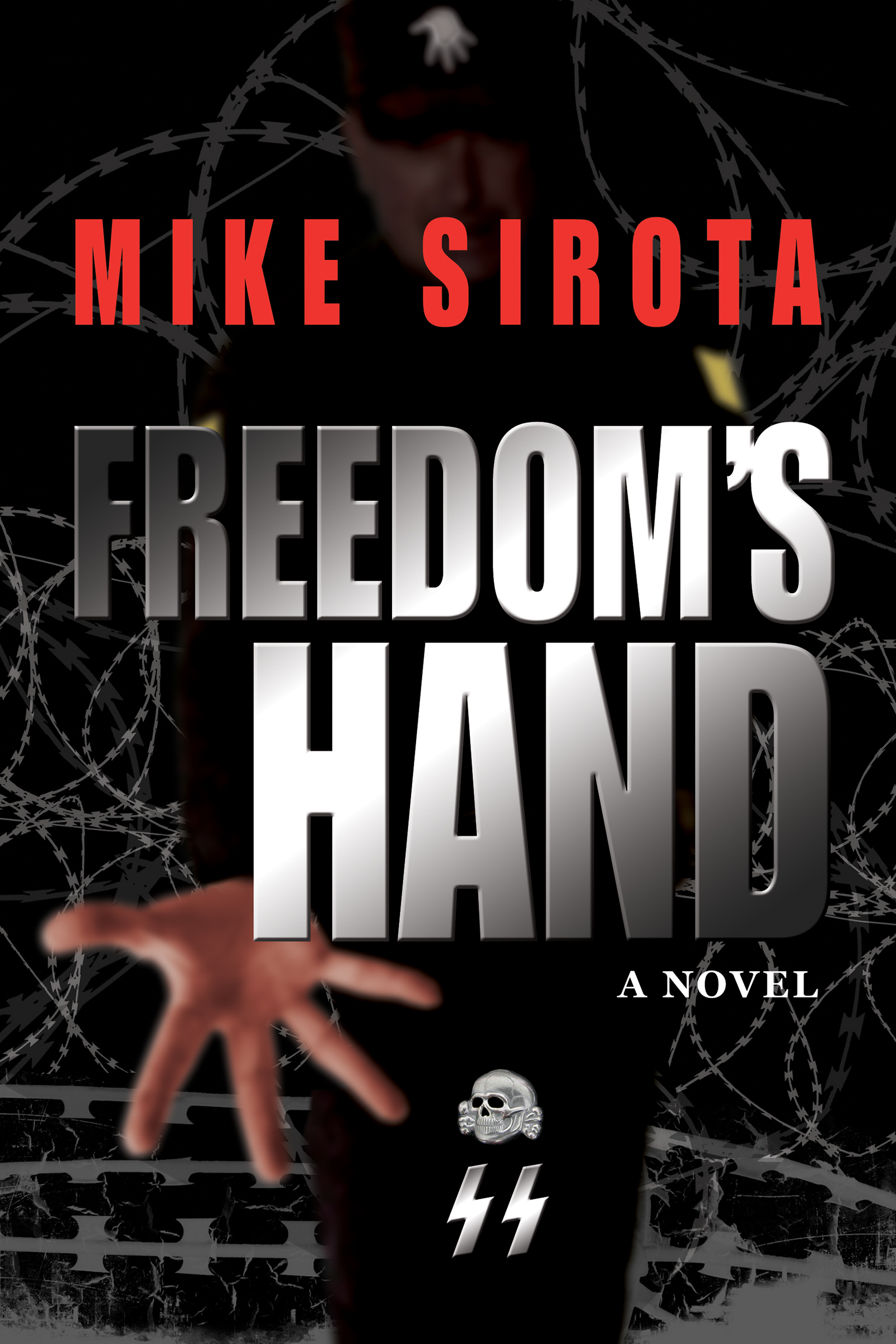This morning my wife picked up the main section of our local newspaper and started reading, as she does every morning. But this time she did not get past page one.
“I can’t believe this!” Jacqueline exclaimed as she tossed the section on the floor. “Is this what our world has come to?”
The lead story, in headline type so big and bold that it threatened to jump off the page, had to do with the Navy Yard massacre in Washington, DC. Just below it, a second article updated eager readers on the chemical weapons situation in Syria.
You know what? I didn’t have the stomach for today’s news either.
 The other night Jacqueline and I watched a movie called Jack Reacher, which opens with a sniper gunning down five unsuspecting people. Only five? The Navy Yard sniper murdered twelve innocents and wounded many others. More important: you can turn off the movie, or close the book, if you don’t like the story, and take solace in the fact that it was only fiction. But while you can toss the newspaper on the floor, or into the recycle bin, you cannot escape the reality that many heartbroken families and friends are grieving over their inconceivable losses. As many have before them. And as many more will in the future.
The other night Jacqueline and I watched a movie called Jack Reacher, which opens with a sniper gunning down five unsuspecting people. Only five? The Navy Yard sniper murdered twelve innocents and wounded many others. More important: you can turn off the movie, or close the book, if you don’t like the story, and take solace in the fact that it was only fiction. But while you can toss the newspaper on the floor, or into the recycle bin, you cannot escape the reality that many heartbroken families and friends are grieving over their inconceivable losses. As many have before them. And as many more will in the future.
Because Evil Never Dies.
Evil gasses its country’s citizens. Evil destroys innocents in a movie theater, or on a military base. Evil slaughters loving schoolchildren in their classrooms. Evil keeps sex slaves chained in a basement for years.
Evil has no rules, and knows no bounds.
Many years ago I did extensive research on serial killers and mass murderers for a proposed novel that I ultimately stopped writing. (To be honest, the research alone got to me.) One constant appeared to be that these monsters all had troubled childhoods—abuse, neglect, abandonment, and so on. Yeah, well, so did a lot of people, but I would guess that 99+ percent of them did not carve up their victims and keep the body parts in their freezer. Or carry an arsenal into a Colorado high school and open fire.
 I also did research on Adolf Hitler’s life for an emotional chapter in my science fiction novel, Bicycling Through Space and Time. Guess what, this monster also had a troubled childhood marked by parental neglect—primarily by his father. Seems that old Alois preferred bending elbows with the boys at the beer halls to spending time with his kid. The family moved around a lot, and young Adolf seldom had any friends. Still, I’m sure a great deal more factored into this personification of Evil causing the deaths of many millions.
I also did research on Adolf Hitler’s life for an emotional chapter in my science fiction novel, Bicycling Through Space and Time. Guess what, this monster also had a troubled childhood marked by parental neglect—primarily by his father. Seems that old Alois preferred bending elbows with the boys at the beer halls to spending time with his kid. The family moved around a lot, and young Adolf seldom had any friends. Still, I’m sure a great deal more factored into this personification of Evil causing the deaths of many millions.
The unimaginable Holocaust carried out by Nazi Germany during World War II became the catalyst for my recently released novel, Freedom’s Hand. Just as Evil could exist in Hitler and his minions, so could it be reborn half a century later in the figure of The Commander and his army of racist thugs. Just as Evil could dedicate itself to “cleansing” Europe of all “imperfections,” so could Evil do the same on American soil.
In some early feedback on Freedom’s Hand, readers said that at first they found the  premise hard to believe. But as the story unfolded they considered all of the Evil that has taken place SINCE World War II, and they realized that the post-Holocaust mantra of Never Again was little more than words. Because Evil Never Dies.
premise hard to believe. But as the story unfolded they considered all of the Evil that has taken place SINCE World War II, and they realized that the post-Holocaust mantra of Never Again was little more than words. Because Evil Never Dies.
If you don’t believe me, just pick up tomorrow’s newspaper.

So true and well said. How is it, I often wonder, that so many are born with completely frayed wiring? Sad … and scary.
Thanks, Lee. I used to worry about my own “wiring,” given the kind of stuff that I’ve written. But as I said before, better on paper than for real.
Very strong, heart-breaking piece.
Yeah, the daily news headlines will do that to you… 🙁
To paraphrase what others have been saying for a long time:
Sickness is a condition that must be treated. Evil is a choice that must be fought. Until society perceives them as different, and is willing to address them accordingly, we will continue to have these same sorts of heartbreaking headlines.
Unfortunately, yes. Thanks for the observation.
I’ve been reading Simon Baron-Cohen’s book “The Science of Evil.” He makes some thought-provoking observations on the nature of evil and how people come to exhibit evil behavior. A fascinating book, if a little clinical.
My work as the doctor in a supermax prison allowed me to work closely with Colorado’s worst felons. My impression of the common denominator in those prisoners was a total lack of empathy for what their actions did to other people. They simply didn’t have what most of us would call a conscience. I could write a book about it.
Writing a book about it sounds like a good–and useful–idea, Bill. Thanks.
As coincidence would have it, last night PBS aired a program called “Brains on Trial”. In a nutshell, it showed scientists analyzing (using MRI, etc.) the brains of criminals to see if there were any distinguishing physical features in people’s brain structure who committed certain types of crimes. They also did the same thing in order to try to determine how judges/juries feel about how “bad” certain crimes are and how they should be punished.
The basic answer is yes, there are noticeable differences in the areas you would expect, as well as others they have yet to determine. It’s as Bill Wright said: many crimes are committed by people whose brains are physically incapable of registering normal empathy for others.
In those instances, their chance of recidivism, should they return to the general population, is far greater than those who do not have those “defects”. It appears that we are on the threshold of bringing neuroscience into the equation of crime and punishment, as well as understanding its causes and benefits.
Great…as long as it can be put to practical use.
Can and will are very different. We already can do a great many things about, and for, troubled people, but society clearly has no will to do them. The answer is always more gun laws and bigger prisons, not interventions and mental health treatment.
With that said, at least they were discussing the possibility of using such evidence in parole hearings. If we can prove that a criminal is physiologically (and thus psychologically) prone to continue the behavior that put them in prison, then they aren’t likely to be let out early. It might not be ideal, but it’s a start.